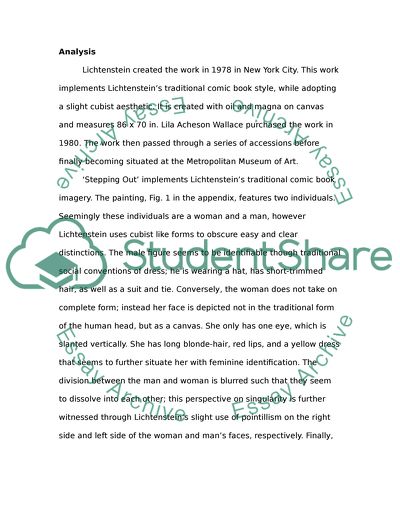Cite this document
(“Roy Lichtenstein - Stepping Out Essay Example | Topics and Well Written Essays - 1500 words”, n.d.)
Retrieved from https://studentshare.org/visual-arts-film-studies/1449794-roy-lichtenstein-stepping-out
Retrieved from https://studentshare.org/visual-arts-film-studies/1449794-roy-lichtenstein-stepping-out
(Roy Lichtenstein - Stepping Out Essay Example | Topics and Well Written Essays - 1500 Words)
https://studentshare.org/visual-arts-film-studies/1449794-roy-lichtenstein-stepping-out.
https://studentshare.org/visual-arts-film-studies/1449794-roy-lichtenstein-stepping-out.
“Roy Lichtenstein - Stepping Out Essay Example | Topics and Well Written Essays - 1500 Words”, n.d. https://studentshare.org/visual-arts-film-studies/1449794-roy-lichtenstein-stepping-out.


